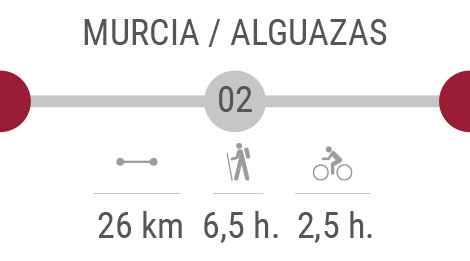Camino de Levante
The first Path of the Cross of Caravaca that has been enhanced, taking advantage of large infrastructures adapted for non-motorized transit, such as the river Segura embankment and the Northwest Greenway, is the Levante Path. It begins in Orihuela, in the Valencian Community, and after passing through Beniel, the city of Murcia, Molina de Segura, Alguazas, Campos del Río, Albudeite, Mula, Bullas, and Cehegín, it reaches Caravaca de la Cruz. This route covers almost 118 kilometers, combining religious significance with culture, nature, gastronomy, and the heritage of the interior of the Region of Murcia.

Stage 1: Orihuela-Murcia
More information
Stage 2: Murcia - Alguazas
More information
Stage 3: Alguazas - Mula
More information
Stage 4: Mula - Bullas
More information